 Image search results - "nichiren" Image search results - "nichiren" |
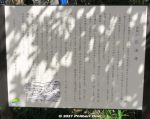
Guhoji is a Nichiren Buddhist temple founded by Priest Gyoki in 737. It's on a small hill noted for cherry blossoms and autumn foliage.Priest Kobo Daishi (Kukai) later reconstructed and expanded the temple in 822. Tokugawa Ieyasu, before he became shogun, granted the temple ownership of its temple grounds in 1591. In 1695, Mito Komon named the temple's tea ceremony room "Henrantei" (遍覧亭). In 1888, the entire temple was destroyed by fire. The present structures were reconstructed in 1890.
|
|
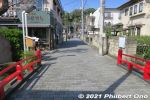
"Mamasan" is the temple's mountain name. Not the same as a mama-san operating a Japanese bar. Photo shows Mama no Tsughihashi Bridge leading to the steps going up to Guhoji Temple on a wooded hill. 真間の継橋
|
|
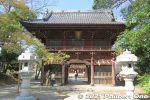
Niomon Gate at the top of the steps, Guhoji's front gate. The two columns house a pair of Nio kings considered to be the protectors of the temple. 仁王門
|
|
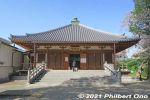
After Niomon Gate, this is the first building you see, Soshido Hall dedicated to Nichiren, founder of the Nichiren Buddhist sect. Reconstructed in 2010 on the 700th anniversary of Nichiren's death. 祖師堂 There are other temple buildings spread out on the hill.
|
|
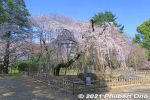
In spring, Guhoji's 400-year-old weeping cherry blossom tree is famous. 伏姫桜
|
|
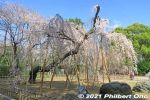
The weeping cherry tree looks different from different angles.
|
|
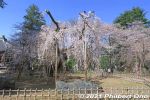
Guhoji's 400-year-old weeping cherry blossom tree is named "Fushihime Sakura." 伏姫桜
|
|
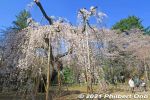
In Ichikawa, Chiba, Guhoji's 400-year-old weeping cherry blossom tree is named "Fushihime Sakura." 伏姫桜
|
|
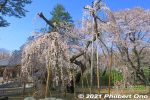
We can see that a few branches had been cut, which means the tree was larger.
|
|
|
|
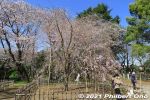
Another weeping cherry tree next to Fushihime Sakura.
|
|
|
|
|
|
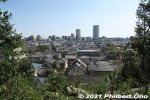
View of Ichikawa Station area from Guhoji. The two skyscrapers are The Towers East on the left and The Towers West on the right. The higher Towers West building has a lookout deck on the 45th floor.
|
|
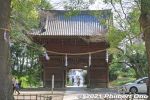
Niomon Gate rear view as you exit.
|
|
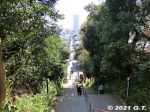
Going down the steps from Guhoji Temple. In the distance, The Towers West skyscraper is visible. The road ahead goes all the way to JR Ichikawa Station.
|
|

"Temple" marks the location of Guhoji Temple on the wooded hill.
|
|
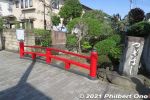
Mama no Tsughihashi Bridge near the steps going up to Guhoji Temple. The bridge is mentioned in some poems in the Man'yoshu. 真間の継橋
|
|
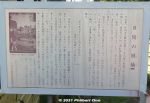
About Mama no Tsughihashi Bridge. 真間の継橋
|
|
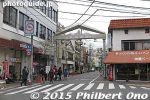
In front of Ikegami Station on the Tokyu Ikegami Line, follow this road for a short walk to Ikegami Honmonji temple.
|
|

Way to Ikegami Honmonji Temple. Belonging to the Nichiren Sect, this is one of Tokyo's major temples.
|
|
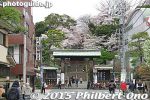
Somon Gate, the first gate you pass through to enter the temple and one of the few structures which were not destroyed during World War II. 総門
|
|
|
|
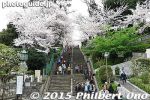
Stone steps to the temple amid cherry blossoms. 此経難持坂
|
|
|
|
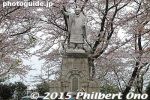
Statue of Nichiren 日蓮聖人像
|
|
|

Map of temple grounds. There are both traditional and modern buildings.
|
|

Niomon Gate 仁王門(三門)
|
|

Soshido Main Hall, Ikegami Honmonji. The original Main Hall was burned during an bombing raid in April 1945. 大堂(祖師堂)
|
|

The hall was reconstructed in 1964 financed by donations from all over Japan. It is a ferro-concrete structure. 大堂(祖師堂)
|
|

Incense burner
|
|

大堂(祖師堂)
|
|

Inside Soshido Hall, view of left side. 大堂(祖師堂)
|
|

Inside Soshido Hall, view of right side. 大堂(祖師堂)
|
|

Soshido Hall altar 大堂(祖師堂)
|
|

Hanamatsuri, Buddha's birthday on April 8. A small statue of the baby Buddha is in a miniature temple called Hanami-do (花御堂). This is Ikegami Honmonji temple in Tokyo.
|
|

Hanamatsuri, Buddha's birthday. When the Buddha was born, he walked seven steps and said, "I am my own Lord through Heaven and Earth," and pointed one hand to Heaven and the other to Earth.
|
|

See the baby buddha's hands pointing to Heaven. Sweet tea is poured over a statue of a baby buddha. According to legend, sweet rain (or perfumed water) fell when the Buddha was born.
|
|

People line up to pour sweet tea over the baby buddha. 大堂
|
|

Side view of Soshido Hall. 大堂
|
|

Roof of Soshido Main Hall 大堂
|
|

Doors of Soshido Main Hall 大堂
|
|

Back of Soshido Main Hall
|
|

Five-story Pagoda and cherry blossoms. 五重塔
|
|

Five-story Pagoda was another structure which escaped war damage. 五重塔
|
|

Five-story Pagoda built in 1607, Tokyo's oldest pagoda. 五重塔
|
|

五重塔
|
|
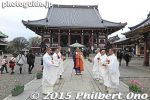
A spring ceremony is held in early April.
|
|
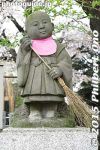
Boy priest sweeping at Ikegami Honmonji, Tokyo.
|
|
|
|
|
|
|
|
|
|
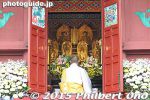
Prayers inside the pagoda.
|
|
|
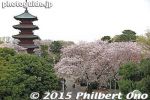
Ikegami Honmonji, Tokyo
|
|

Sign pointing the way to wrestler Rikidozan's grave.
|
|

Rikidozan's grave, the temple's most famous grave.
|
|

Rikidozan's grave
|
|

Rikidozan's gravestone
|
|

Statue of Rikidozan who was famous for his "karate chop" during the 1950s and early '60s. This famous postwar "Japanese hero" was actually Korean.
|
|
|
|

Statue of Rikidozan (1924-1963) at his grave at Ikegami Honmonji temple, Tokyo. He was a sumo wrestler until 1950 before becoming a pro wrestler.
|
|

Behind the pagoda are many graves.
|
|

Tea ceremony
|
|
|
|
|
|

Nitchodo Hall 日朝堂
|
|

Bell tower 鐘楼堂
|
|

Treasure House 霊宝殿
|
|

Kyozo houses Buddhist scriptures. 経蔵
|
|

Altar in Kyozo 経蔵
|
|

Gate to Honden
|
|

Honden and temple office on right. 本殿、客殿寺務所
|
|

Honden Hall 本殿
|
|

Hoto tower 宝塔
|
|

Hoto tower built on the site where Nichiren was cremated. 宝塔
|
|

Hoto means "Treasure Tower." A beautiful building. Ikegami Honmonji, Tokyo 宝塔
|
|

Built in 1828 and made of wood. It is the only tower of its kind in Japan placed outdoors. 宝塔
|
|

宝塔
|
|

Hoto tower 宝塔
|
|

Graves near Hoto tower
|
|

Spring festival site with food and entertainment.
|
|
|
|
|
|
|
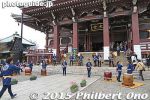
Taiko drum performance in early April in front of the temple.
|
|

On Feb. 3, Ikegami Honmonji holds the annual Setsubun ceremony and bean throwing.
|
|

Before the bean throwing, a few taiko drummer friends performed at 1 pm for 20 min. on the bean-throwing platform in front of the temple's Hondo main hall.
|
|

Taiko drummer
|
|
|

Setsubun ceremonies on Feb. 3 start at 1 pm. Bean throwing (mamemaki) at 3 pm.
|
|

Pretty cold day, but it was sunny with little wind.
|
|

Ogre (oni) appear in a procession.
|
|
|

Priests procession heading for Ikegami Honmonji's main worship hall on Setsubun day, Feb. 3.
|
|

They entered the temple and held a service at 2 pm.
|
|

Beating a drum-like instrument.
|
|

Incense burner
|
|

Crowd starts to gather for the bean throwing.
|
|
|

They will throw beans on both the left and right sides of the platform.
|
|
|

The bean throwing was going to start at 3 pm. We stood in front of the platform at 2:15 pm. They sectioned off this area for kids (and elderly).
|
|

Bringing out large baskets of beans.
|
|

About 20 min. later, the place got full.
|
|
|

Matsumoto Iyo's place.
|
|

Press cameramen behind us on their own platform to record the event.
|
|

At 3 pm, the bean throwers appeared and took their positions after attending a ceremony inside the temple.
|
|

The bean throwers included minor celebrities, former pro wrestlers, and men and women born in the Year of the Monkey.
|
|

That's the temple's official mascot (Kozo-kun).
|
|

In front were two minor "idol" singers and a red oni. It was nice that they posted the names of the celebrities, but I didn't know any of them except one...
|
|

Because of the temple's Rikidozan connection, there were a number of pro wrestlers as well. (No sumo wrestlers.)
|
|

Setsubun at Ikegami Honmonji temple, Tokyo.
|
|

Matsumoto Iyo to throw beans for setsubun at Ikegami Honmonji temple, Tokyo.
|
|

Former yokozuna Akebono was also supposed to throw beans, but he had to be hospitalized for a swollen right leg. Too bad.
|
|

Setsubun bean throwing at Ikegami Honmonji temple, Tokyo.They threw a lot of beans for about 10 min. Interesting that they did not say, "Oni wa soto! Fuku wa uchi!" We caught a good haul of lucky beans.
|
|

They threw a lot of beans. I think just about everyone was able to catch beans.
|
|
|
|

My lucky beans. The beans are in little plastic bags with a paper bottom.
|
|

The beans included a square piece of caramel candy. The paper says "Lucky beans," "Setsubun," the name of the temple, and an ad for a local business.
|
|

Crowd goes home after setsubun.
|
|

Hanamatsuri Parade on April 8, Buddha's birthday.
|
|

Hanamatsuri Parade on April 8, Buddha's birthday.
|
|

Hanamatsuri Parade on April 8, Buddha's birthday.
|
|

Hanamatsuri Parade on April 8, Buddha's birthday.
|
|

White elephant is usually present during Hanamatsuri. On the day before the Buddha's mother Queen Maya gave birth, she dreamed that a white elephant entered her womb.
|
|

White elephant for Hanamatsuri
|
|

Car for Hanamatsuri
|
|

Hanamatsuri parade
|
|

Marker for the temple.
|
|

Poster for the temple's spring festival which includes Hanamatsuri.
|
|

On Oct. 12, the annual Oeshiki Festival (お会式) was held at Ikegami Honmonji temple. It commemorates the anniversary of Nichiren's death. He died here in 1282.
|
|

Since most of Japan's big festivals are Shinto, it's nice to see a large-scale Buddhist festival.
|
|

The festival's main event is an evening lantern parade (called Mando) of thousands of Nichiren believers from all over Japan. They come in groups according to their respective temple or district.
|
|
|

At the end of each group is a flowery (cherry blossoms) lantern float (called mando). It's a lantern pagoda with flowery streamers.
|
|

Following the firemen's standards are musicians. The drummers are the most prominent. They beat handheld, fan-shaped taiko drums (called uchiwa daiko). Amazing how loud these little flat drums can be.
|
|

Marching priests.
|
|
|
|

Each group is led by firemen's standards (matoi) which are poles with streamers. These were originally used by firemen's units in the Edo Period as their banner. Now used at festivals and for ceremonial purposes only.
|
|

Path to the temple.
|
|
|
|

Ikegami Honmonji taiko drummers.
|
|
|
|
|
|

Everyone paraded to the temple and entered the temple for prayers, then dispersed. The lantern parade lasted from 6 pm till about 11 pm or so.
|
|
|
|

Prayers in the main worship hall.
|
|

Maybe about 300,000 spectators lined the streets from the train station to the temple.
|
|
|

Interacting with the crowd. They love foreigners and babies in the crowd. They let them beat their drum.
|
|
|
|
|
|
|
|
|
|
|
|
|

In front of the station.
|
|
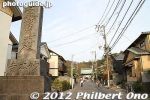
Myohonji is a Nichiren Buddhist temple founded in 1260. Site was formerly the estate of the Hiki Yoshikazu, a senior retainer of Minamoto Yoritomo. The temple grounds is noted for cherry blossoms and other flowers.
|
|
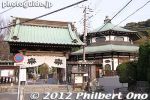
Somon Gate. 10-min. walk from Kamakura Station.
|
|

About Myohonji temple.
|
|

Map of Myohonji temple.
|
|

Nitenmon Gate at Myohonji temple, Kamakura.
|
|
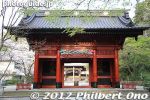
Nitenmon Gate at Myohonji temple, Kamakura.
|
|
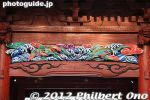
Nitenmon Gate at Myohonji temple, Kamakura.
|
|
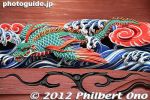
Carving on Nitenmon Gate at Myohonji temple, Kamakura.
|
|
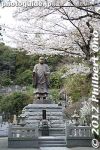
Statue of Nichiren.
|
|
|
|
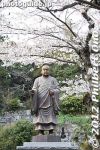
Statue of Nichiren under cherry blossoms at Myohonji temple, Kamakura.
|
|
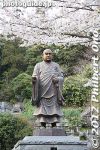
Statue of Nichiren under cherry blossoms at Myohonji temple, Kamakura.
|
|
|
|
|
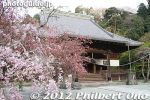
Soshido Hall at Myohonji temple, Kamakura.
|
|
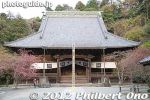
Soshido Hall at Myohonji temple, Kamakura. Temple's main hall. 祖師堂
|
|
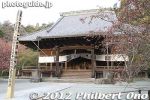
Soshido Hall at Myohonji temple, Kamakura. 祖師堂
|
|
|
|
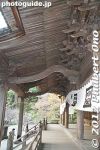
Soshido Hall at Myohonji temple, Kamakura. 祖師堂
|
|
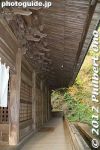
Side of Soshido Hall at Myohonji temple, Kamakura. 祖師堂f
|
|
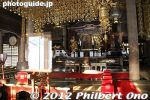
Inside Soshido Hall.
|
|
|
|
|
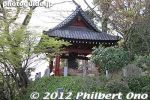
Temple bell
|
|
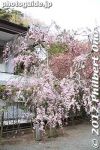
Weeping cherry tree at Myohonji temple.
|
|
|
|
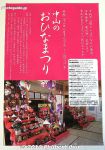
The Nakayama Hina Matsuri Girl's Day Festival is held from mid-Feb. to March 3. The main venue is Nakayama Hokekyoji temple.
|
|

Hina dolls displayed inside JR Shimousa-Nakayama Station.
|
|

Sanmon Gate 三門
|
|

Sanmon Gate 三門
|
|

Sanmon Gate 三門
|
|
|
|

Statue of Nichiren
|
|

Statue of Nichiren
|
|

Temple event schedule
|
|

Entering the Sanmon Gate.
|
|

Short path to the main temple.
|
|

Smaller temples along the way.
|
|
|
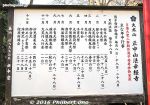
Nakayama Hokekyo annual event schedule
|
|

Short bridge
|
|
|

Nakayama Hokekyoji temple's Five-Story Pagoda 五重塔
|
|
|
|
|

Nakayama Hokekyoji temple's Five-Story Pagoda, an Important Cultural Property 五重塔
|
|
|

Map of Nakayama Hokekyoji temple
|
|

Soshido Hall on right.
|
|
|

Soshido Hall
|
|

Soshido Hall, Important Cultural Property
|
|
|
|

Path to Soshido Hall, the main temple. 祖師堂
|
|
|
|
|
|

Incense burner
|
|
|
|
|
|

Soshido Hall
|
|
|

Soshido Hall is open to the public.
|
|
|
|
|
|
|
|
|

Soshido Hall
|
|

Soshido Hall
|
|
|

Left side of Soshido Hall
|
|

Left side of Soshido Hall
|
|

Soshido Hall
|
|

Soshido Hall
|
|
|
|